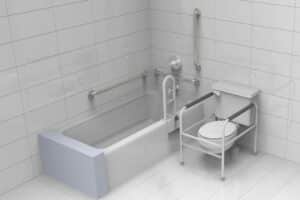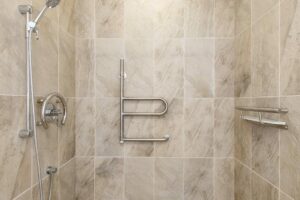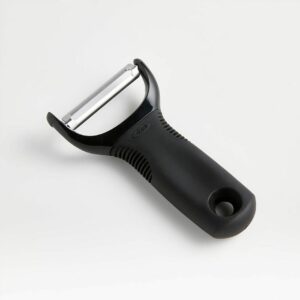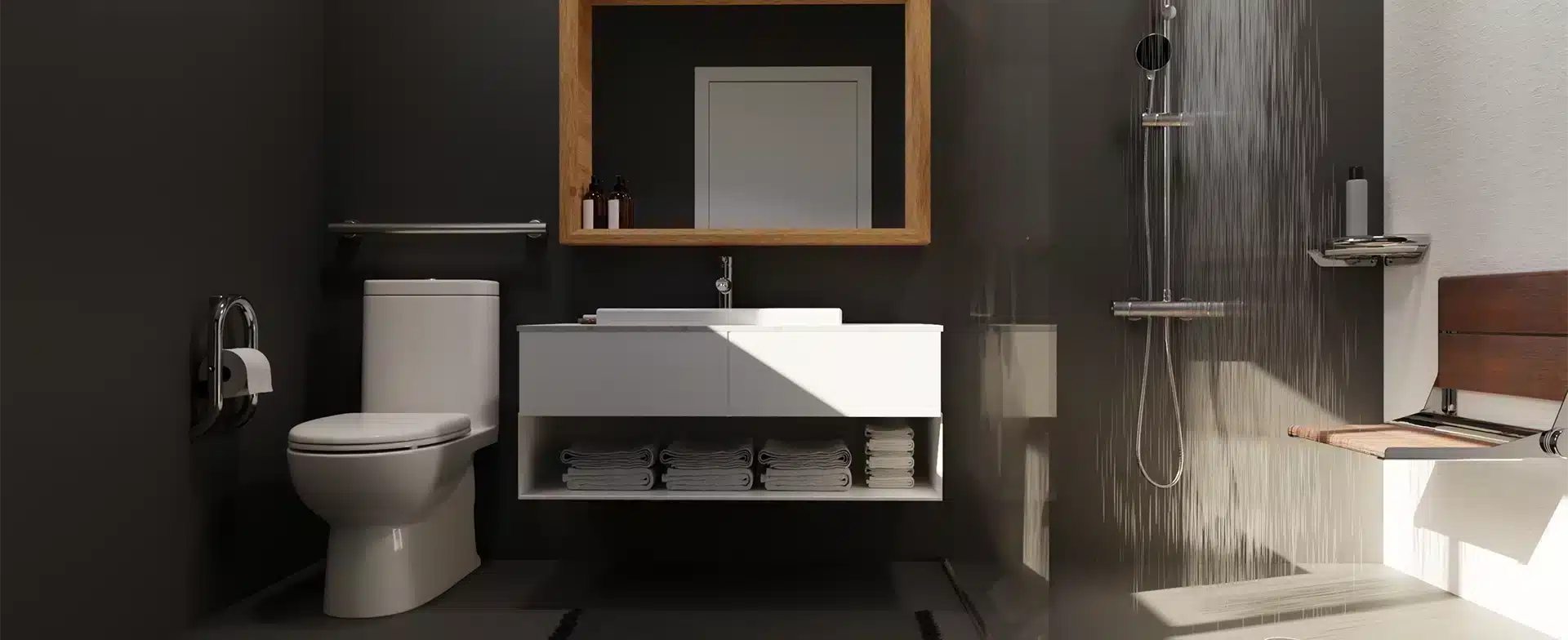Understanding Universal Design
In this day and age, we’re constantly bombarded by advertising that tries to sell us products that will solve all of our problems—unclutter our homes; make cooking take half as long; allow us to age in place—and this all sounds great.
It also makes it hard to know which products are truly well-designed, and which ones will leave us cursing our Amazon carts and wondering why we trusted all the 5-star reviews.
Wouldn’t it be great if there was a way to assess products’ designs before we buy them? As both an engineer and occupational therapist (OT), I often use the principles of Universal Design to help me choose products that fit my needs and the needs of my clients.
Becoming familiar with the principles of Universal Design can help point you toward buying products that are flexible, safe, and simple to use!
What is Universal Design?
In simple terms, Universal Design is an approach to designing that considers the needs of people of all ages, sizes, and levels of ability to produce things that can be used by anyone.
Ireland’s National Disability Authority (NDA) defines Universal Design as follows:
“Universal Design is the design and composition of an environment so that it can be accessed, understood and used to the greatest extent possible by all people regardless of their age, size, ability or disability.”
To summarize, the benefit of Universal Design is that it seeks to create products, environments, and experiences that work for a wide variety of people without leaving anyone out. At its best, Universal Design includes everyone and creates barriers for no one.
The 7 Principles of Universal Design
According to NDA, The 7 Principles of Universal Design were developed in 1997 by a working group of architects, product designers, engineers and environmental design researchers.
These principles help me consider whether or not a product will fit into my routine, fulfill the need in question, and work for a variety of clients. With a general understanding of these principles, you too can become a smarter consumer and know how to spot products that are accessible, functional, and safe.
I’ve outlined these 7 essential components of Universal Design below, along with examples that you may not even realize are already embedded in your everyday life. Even though not all of the products in these examples are universally designed, they still embody some of Universal Design’s defining characteristics.
Principle 1: Equitable Use
Equitable Use implies that a design is appealing to all and ensures all users equal privacy, security, and safety.
Example: Think about the last time you entered a store through an automatic sliding door. Its functionality works the same way for everyone.
Principle 2: Flexibility in Use
Flexibility in Use means a product can be used in a number of ways.
Example: Many schools have done away with right and left-handed desks in favor of desks that are designed to be comfortable for both right and left-handed students.
Principle 3: Simple and Intuitive Use
Simple and Intuitive Use means you shouldn’t have to think too hard about how to use a product.
Example: Elevator buttons that have arrows and words that say “up” and “down” make it easy to know how to call the elevator. Providing multiple kinds of intuitive information in this way allows a variety of potential users to understand how to use the elevator even if they can’t read English.
Principle 4: Perceptible Information
Perceptible Information suggests that the message being conveyed by the product should be clear, both visually and cognitively.
Example: Have you ever wondered why the only word on a stop sign is “STOP”? And that white text on a red background is rather eye-catching, isn’t it? This singular message is made clear by a number of factors; colour, text, and even the distinctly familiar shape of a stop sign.
Principle 5: Tolerant of Error
Tolerant of Error indicates that there are features within a product to ensure safety, even if the user makes a mistake.
Example: Many irons and other heated products shut themselves off after a certain amount of time to make sure they do not start a fire.
Principle 6: Low Physical Effort
Low Physical Effort should be required to make a product work as it should.
Example: Lever door handles are easier to operate than typical door knobs, whether you’re using a whole hand, fist, elbow, or are carrying many bags of groceries!
Principle 7: Size and Space for Approach and Use
Size and Space for Approach and Use means that a person who is tall, short, big, small, standing, sitting, or somewhere in between is able to engage with and use a product.
Example: Lowered check-out counters in stores offer enough room for someone to walk up, wheel up, or approach with a mobility device and pay for their purchase or make an order.
In public spaces it is sometimes easier to pick out features like this, as I’ve suggested above. However, these principles can be seen on a more personal level in our homes and in the products we purchase as well.
Universal Design Isn’t Just Design for Disabilities
Before we dive into smart shopping tips, let’s first address a potential elephant in the room. The concept of Universal Design has at times been associated with designing for disabilities. This has led some people away from embracing its merit.
The Universal Design Project has a great quote on their website about this misperception:
“Universal Design is truly for everyone, despite widespread confusion about it only being for people affected by disability. Thing is, Universal Design wouldn’t be needed if disability wasn’t part of being human.”
The truth is that Universal Design is design that benefits all people equally. If a product is truly universal in its design, it is no more or less useful for any one person or group.
Identifying Universal Design in Home Safety Products
Let’s start with an easier example—home safety products.
Everyone wants to feel safe in their home, and most people also want their homes to look nice. But for a long time, there were almost no products that considered both of these needs. In the past, one of the only solutions for at-home safety was installing clunky grab bars, which can make a home look and feel like a medical environment.
Nowadays, we’re not as limited. We’re lucky enough to have options for grab bars and safety equipment made with the principles of Universal Design in mind. Invisia Collection, for example, checks off quite a few boxes in the list of Universal Design principles.
Their Accent Bar, Accent Ring, and Shampoo Shelf are flexible, simple, and intuitive in their use (principles 2 & 3)—both as grab bars and storage areas within the shower. Additionally, these products can be considered equitable in their use (principle 1) because they’re aesthetically appealing and would benefit all users, giving them a place to steady themselves in a slippery shower.
I can see my patients using products like these for transfers in and out of the shower. I can just as easily see myself using them to brace myself while shaving my legs. That’s because there’s nothing inherently medical about Invisia’s products. They are attractive, well-designed, and promote safety and effective storage within the shower. They work for everyone!
With products like this, safety can be built into homes in a way that works for everyone without making anyone feel self-conscious just because they need safety equipment.
How Do You Know if a Product is Well-Designed?
We can certainly search for products that are universally designed and work for everyone, as described above, but in reality that isn’t always possible.
Unfortunately, Universal Design is not the norm in the world today. That doesn’t mean you can’t find well-designed products for you and your loved ones!
Below are some strategies I’ve given my occupational therapy clients to help them select products to better meet their needs.
What is the product’s use-case?
First off, picture yourself using the product. Ask yourself:
- Why do I need this?
- What am I doing now that isn’t working?
- How would having this product make it work better?
These questions will help you to understand what you really need and make sure you don’t buy something that will end up gathering dust in a junk closet. If you’re asking them proactively, these questions ensure that the product you’re purchasing will be able to support your needs in the future.
Will universal design work in your space?
Next, consider where this product could fit in your physical space. Do you have enough room to properly install and use this product? If, for example, you’re looking to purchase a grab bar, you need to know there are wall studs where you’d like to mount it.
It’s also important to be sure that you have the ability and resources to properly install anything that you buy. In some cases, safety equipment can do more harm than good if it’s not properly installed. If you aren’t able to install a product yourself, make sure that you can plan to have it installed by someone you trust.
In any case, make sure you know what kind of work you’re signing up for when you bring something new into your space.
Will it work with your lifestyle?
Finally, return to that initial image of yourself using the product and think about how it would fit with your daily routine and habits. The ideal product will seamlessly fit into your routine and make it easier to go about your day.
Balancing Form and Function
As I mentioned before, safety products have a bad reputation for ruining the aesthetic appeal of a space, instead making it look and feel like a hospital.
While there are aesthetically appealing safety products on the market, it’s not always possible to select products that perfectly match your home décor. It is, therefore, critical to be honest with yourself about your needs and priorities so that you can search for products that accommodate these needs, making them more appealing to use.
If this is the case, I recommend that clients prioritize their safety needs first, and—where possible—consider getting creative to make the most out of the product that functions best. Of course—in a universally designed world, we wouldn’t have to make concessions for function and safety over aesthetics—and we are certainly headed in that direction!
In the meantime, we can use the principles of Universal Design, along with some pragmatic thinking to guide us toward products that are well designed—keeping in mind that even though we may not always find the perfect fit, we can find products that work well, keep us safe, and can look pretty good at the same time!
***












